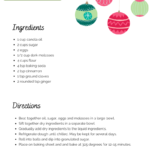Everyone knows that to grow and improve we need to evolve. To evolve involves change. But change is hard. However, a failure to change may lead you down a road of unnecessary danger.
Weight loss is the change that so many of us desire. Most attempt some fad diet, and then another, but generally the diet ultimately fails.
 Sure, there is initial weight loss, sometimes dramatic weight loss, but most often the weight reappears, often along with a total weight increase. The dieter believes they have failed when really it is the diet that is the failure.
Sure, there is initial weight loss, sometimes dramatic weight loss, but most often the weight reappears, often along with a total weight increase. The dieter believes they have failed when really it is the diet that is the failure.
As diets are seldom a viable long term solution, I recommend the following keys to making changes that have been proven to work (The same keys work for making any behavior change but we will concentrate on weight loss here).
1. Pick something important for you to change. When a client comes to me because their doctor wants them to lose weight, I know the chance for success is slim. There is no way someone will put in all the effort it takes to lose weight when the goal is someone else’s goal. You can only change if you want to do it. So, though weight loss is the clinical goal to help the client, the client and I begin by working together on whatever the client wants to change. Whatever that change is, it is a move toward positive change, and thus likely to work since it is important to the client.
To understand what I am talking about, look at your life. Now visualize your dream life. What needs to happen to get you from where you are now to where you want to be? What obstacles are in your way? Is pain (emotional or physical) getting in the way of your plans? If so, what’s causing it? What options are available to you? What steps can you take to alleviate your pain? Most important, what steps, if any, are you willing to take. We don’t like to be uncomfortable, so every step forward is important.
2. Pick a realistic baby step that you are ready for. It is overwhelming to look at losing 20 pounds. Being overwhelmed is paralyzing. Research shows that people who take a lifestyle “baby step” feel good about their success and are more likely to take that next baby step.
What am I talking about? Say you want to lose weight and you know you eat too many calories. You eat at a restaurant for lunch every day. You understand that simply packing your lunch instead of eating out would likely save significant calories. So, what do we do? We get SMART!
3. Set a short term SMART goal that will last 1-2 weeks. You won’t be stuck with it for long if it’s not working. The easiest goals to meet are:
S-Specific–Be very specific about what you will do, how you’ll do it, and when you will do it.
M-Measurable–Write a goal in a way you can measure your success.
A-Action-Oriented–Focus on a behavior that you can take action on because that is what you have control over.
R-Realistic–Choose a goal that is attainable. You have what you need to meet the goal with a reasonable amount of effort.
T-Timely–Choose a time that you will start and when you will assess outcome.
Here’s an example: I will pack my lunch for work two days a week starting Monday for 2 weeks. I will pack it the night before so it is ready to go in the morning.
The goal is so clear that even a stranger can understand it. You know exactly what the plan is and will be able to measure your success.
4. Track it. Simply put, we do what we measure. You can track it on a calendar or a chart or whatever works for you to see how you are doing.
5. Make adjustments and reward yourself. Celebrate your achievement by rewarding yourself if you meet your goal. You really should pat yourself on the back at the very least. Just as importantly, if you missed the mark, learn from it and make adjustments.
Was the goal unrealistic? What got in the way? What adjustment can you make to meet the goal? Or do you want to set a different goal altogether?






Leave a Reply